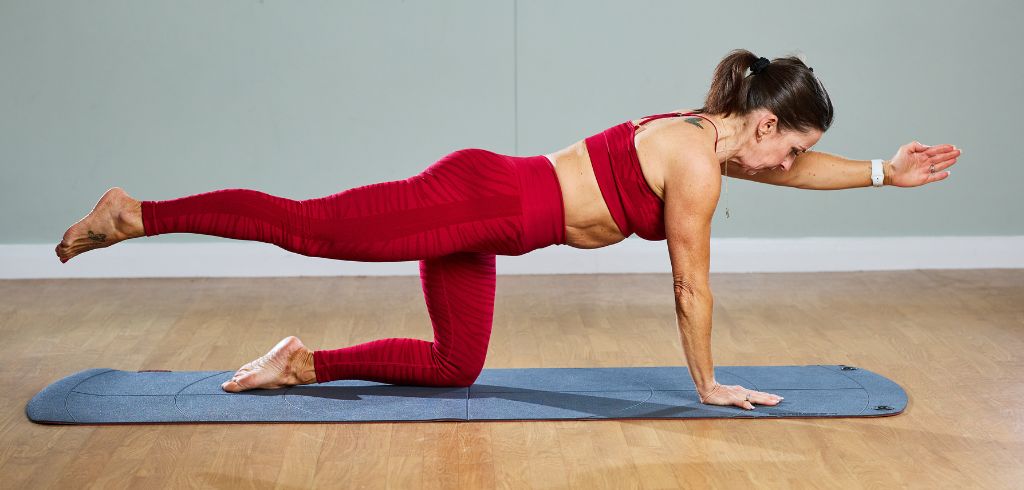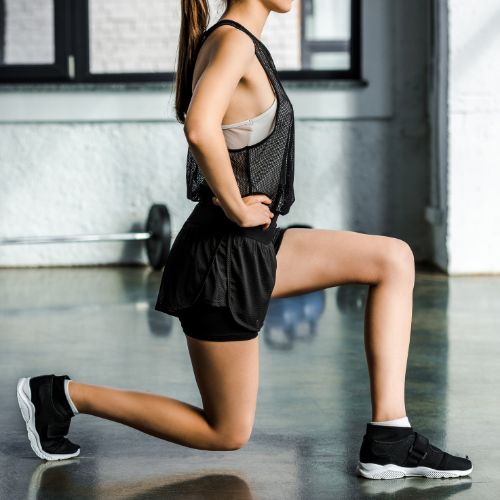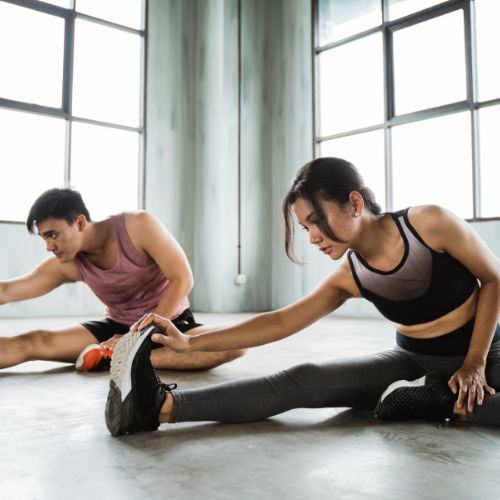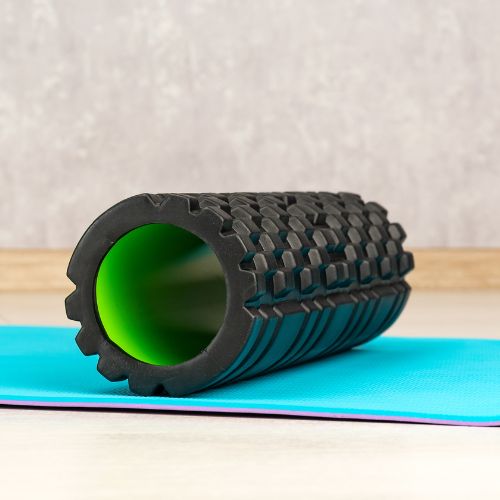
Have you ever considered the essential role that stretching exercises play in your workout routine? While you might focus primarily on cardio or strength training, neglecting to stretch can limit your performance and increase your risk of injury. Stretching improves your flexibility and range of motion and promotes better blood circulation, which is vital for muscle repair and recovery.
Whether you’re a seasoned athlete or a fitness novice, understanding the impact of proper stretching could significantly transform your approach to physical activity. In this blog, we’ll explore why incorporating stretching into your exercise routine is vital and how it can help you achieve your fitness goals while keeping your body healthy and injury-free.
Benefits of stretching for physical health
Improves flexibility
Stretching can significantly enhance your flexibility, an essential aspect of overall physical well-being. Flexibility isn’t just about touching your toes or doing a split; it’s a fundamental component of your fitness that impacts how well you perform daily tasks like reaching, bending, or stooping. Stretching exercises are crucial as they keep your muscles strong, supple, and healthy, which is particularly significant as you mature.
Stretching is essential before and after physical activity. Before, it readies your body for the upcoming task, ensuring you’re more fluid and less prone to injuries. After, it aids in gradually cooling down your body, reducing the risk of muscle stiffness and soreness.
Increases range of motion
Stretching expands your range of motion, improving your joints’ ability to move through their full arc. When stretching is a regular part of your workout routine, you enhance your joints’ capability to move more freely.
This increased range of motion is also vital for injury prevention. The more you can move a joint without strain, the less likely you will push past a safe limit during physical activities. Stretching keeps your joints and attaching muscles supple, so your body is prepared to handle movement without harm when you’re thrust into sudden action—be it in sports, lifting, or everyday tasks. You’ll notice that activities become easier as your joints adapt to increased use without the usual resistance.
Improves blood circulation
Improving your workout with regular stretching exercises can significantly increase blood circulation throughout your body. When you stretch, you loosen up your muscles and joints and enhance the flow of blood to different parts of your body. This increased circulation brings more oxygen and nutrients to your muscles, which is vital during workouts and recovery.
Enhanced blood flow also significantly affects muscle recovery and reduces soreness after exercise. Known as delayed onset muscle soreness (DOMS), this discomfort is common after a strenuous workout.
Posture improvement
Regularly integrating stretching exercises into your routine can significantly boost your posture. When you stretch consistently, you directly address and correct muscle imbalances that often contribute to poor posture. Lengthening tight muscles that pull areas of the body away from their intended position alleviates the strain on your posture.
Stretching also promotes better spinal alignment. As you improve the flexibility of your spine and the muscles around it, you’ll notice a natural adjustment in your stance. Proper spinal alignment reduces stress on your joints, leading to a smoother way of moving through life.
Enhances athletic performance
Stretching improves your athletic performance, especially in sports that require high flexibility and endurance. Incorporating regular stretching into your routine enhances your body’s ability to perform at its peak.
For instance, during swimming, long, fluid strokes that pull through the water with efficiency are essential. Stretching keeps your muscles long and flexible, ensuring each movement is as effective as possible.
If you’re a runner, your stride benefits immensely from flexibility. Looser leg muscles mean longer, more powerful strides, which use less energy for each step, allowing you to maintain your pace longer without fatigue.
Cyclists also see significant benefits from stretching. The repetitive nature of cycling means tight muscles can quickly lead to a decrease in range of motion. However, with regular stretching, you can maintain proper muscle alignment and function, which translates directly into better pedal efficiency.
Reduces injury
Reducing your risk of injuries is one of the most compelling reasons to include stretching in your fitness regimen. Here’s how incorporating stretching into your routine can help you stay safe:
- Muscle Strain Prevention: Stretching keeps your muscles flexible and prepared for the exertion of other physical activities. Flexible muscles are less likely to experience tears and strains.
- Improves Recovery Time: Post-workout stretches can notably reduce muscle tightness and soreness. This helps speed up your recovery time and prepares your muscles for the next round of exercise, making them less prone to injuries.
- Reduces Joint and Muscle Stiffness: Regular stretching helps maintain the health of your muscles and joints. By easing stiffness, you’re less likely to face the kind of injuries that come from rigid, unyielded muscles and joints.
Psychological benefits of stretching
Stress relief
You may not realise it, but incorporating stretching into your daily routine can significantly reduce stress levels. When you stretch, you loosen up your muscles and invite tranquillity into your mind. Deliberate, slow movements combined with deep, focused breathing increase your awareness of the present moment, promoting a state of mindfulness that sweeps away the day’s stresses.
Stretching acts as a form of active meditation. Concentrating on your movements and aligning your breath with each stretch creates a mental space that helps clear the clutter in your mind. This practice can be particularly effective in the morning to set a calm tone for the day or at night to unwind before sleep.
Reduces muscle tension
Stretching not only helps relieve stress but also eases muscle tension that builds up from prolonged sitting or emotional distress. When you’re stuck in your chair for hours, your muscles tighten, particularly around your neck, shoulders, and lower back. By integrating stretching into your routine, you’re effectively loosening these tense areas, which can greatly alleviate discomfort and boost your overall well-being.
Types of stretching exercises
Dynamic stretching (pre-workout)
Dynamic stretching revs up your body’s engine before a workout, seamlessly preparing your muscles for the activity ahead. This type of stretching involves movement-based exercises that warm up your muscles and improve your mobility and flexibility, ensuring you’re ready to tackle any physical activity with a reduced risk of injury. This systematic approach to warming up can greatly enhance your performance and help you get the most out of your exercise session.
Consider incorporating these dynamic stretches into your pre-workout routine:
- Leg Swings: They activate the muscles in your legs and hips, preparing them for running or lifting.
- Arm Circles: These help loosen the shoulders and upper back, ideal before swimming or upper body strength training.
- Lunges with a Twist: This stretch targets your lower body while also involving your core and improving rotational mobility.

Static stretching (post-workout)
After invigorating your body with dynamic stretches before your workout, it’s just as essential to wind down with static stretching once your exercise routine is complete. This type of stretching involves holding a stretch for 10 to 30 seconds, allowing your muscles to relax and gradually cool down. It’s a perfect way to shift from the intensity of your workout to a state of normal activity or rest.

Static stretching can greatly benefit your post-workout recovery. By gently stretching the muscles you’ve just exercised, you’re helping to prevent stiffness and soreness. This makes it easier for you to move the next day and reduces the risk of injury.
Try these static stretches post-workout:
- Hamstring stretch: Reach for your toes while sitting or standing
- Calf stretch: Press your heel down and lift toes up, using a wall for support if needed
- Chest and shoulder stretch: Clasp hands behind your back, straighten your arms and lift them away from your body
- Core twist: Lie on your back, bend your knees, and gently lower them to one side while keeping your shoulders flat
Proprioceptive neuromuscular facilitation (PNF) stretching
Proprioceptive neuromuscular facilitation (PNF) stretching is an advanced technique that takes flexibility training to the next level. Unlike basic stretches, PNF stretching improves flexibility and muscular strength. This approach is particularly effective for athletes and those in rehabilitation.
PNF stretching works by alternating contraction and relaxation of the targeted muscle and its opposite. For example, if you’re focusing on your hamstrings, you’ll start by contracting them, holding the tension, and then relaxing into a deeper stretch. This method can greatly increase your range of motion over time.
- Hamstring PNF: Lie on your back, lift one leg, push against a partner’s hand for 6 seconds, relax, then stretch further
- Shoulder PNF: Reach one arm behind your head, use your other hand to apply resistance as you push your elbow back for 6 seconds, relax, then stretch deeper
- Hip flexor PNF: In a lunge position, contract your back leg for 6 seconds, relax, then sink deeper into the lunge

Timing and frequency of stretching
When to stretch
Understanding when to stretch plays a vital role in maximising the benefits of your fitness regimen. Before you start your main workout, begin with dynamic stretches. These are movements where you stretch as you move, which helps warm up your muscles and prepare your joints for the activity ahead. This type of stretching can prevent injuries and make your workout more efficient.
After you’ve completed your exercise routine, it’s essential to wind down with static stretches. This involves holding a stretch for a period, allowing your muscles to relax and slowly cool down. Post-workout stretching can help reduce muscle soreness and improve flexibility.
Moreover, consider including stretching into your recovery days. Combining stretching with other recovery techniques, such as foam rolling, massage, or a gentle yoga session, can boost muscle recovery and promote overall well-being.
How often to stretch
Determining how frequently to stretch is vital for maximising your fitness outcomes and preventing injury. Ideally, you should incorporate stretching into your daily regimen, particularly after workouts when your muscles are warm and more elastic. This consistent practice improves your flexibility, fosters better muscle recovery, and reduces the risk of injuries.
It’s crucial to strike the right balance to avoid under-stretching or overstretching. Under-stretching can leave you rigid and restrict your range of motion, undermining your performance in physical activities. On the other hand, overstretching can lead to muscle strains or more severe injuries that could sideline you from your regular activities.
Aiming for a daily stretching session of about 5 to 10 minutes can significantly enhance your flexibility and overall physical health. Focus on major muscle groups such as your calves, thighs, hips, lower back, neck, and shoulders.
Stretching equipment

Resistance bands
Resistance bands can greatly improve your stretching exercises. They provide adjustable resistance, allowing you to deepen your stretches and increase your flexibility over time. They’re particularly effective because they help maintain good form and target specific muscle groups, making each stretch more effective.
Foam rollers
Foam rollers, essential tools in any stretching kit, work wonders for myofascial release. When you’re using one, you give yourself a deep tissue massage, breaking up the tight knots that form in your muscles from exercise or daily activities. This process alleviates pain and increases your range of motion, making your stretching routine more effective.
As you roll over different parts of your body, the pressure helps to release the fascia—a thin sheath of fibrous tissue that encloses a muscle or other organ—thus promoting better blood flow and aiding in recovery. Regular use of a foam roller can greatly reduce muscle tension, which is especially beneficial after a tough workout.

Improve your fitness and flexibility at Bluecoat Sports
Bluecoat Sports offers many ways to enhance your fitness and flexibility. Our gym and fitness classes cater to all levels, from beginners to seasoned athletes. Whether you prefer solo workouts or group sessions, you’ll find options to help you reach your goals. Join Bluecoat Sports today and take advantage of our gym facilities and varied fitness classes. Our experienced trainers can guide you in improving your strength, endurance, and flexibility. Start your journey to better health and performance with us – sign up now.